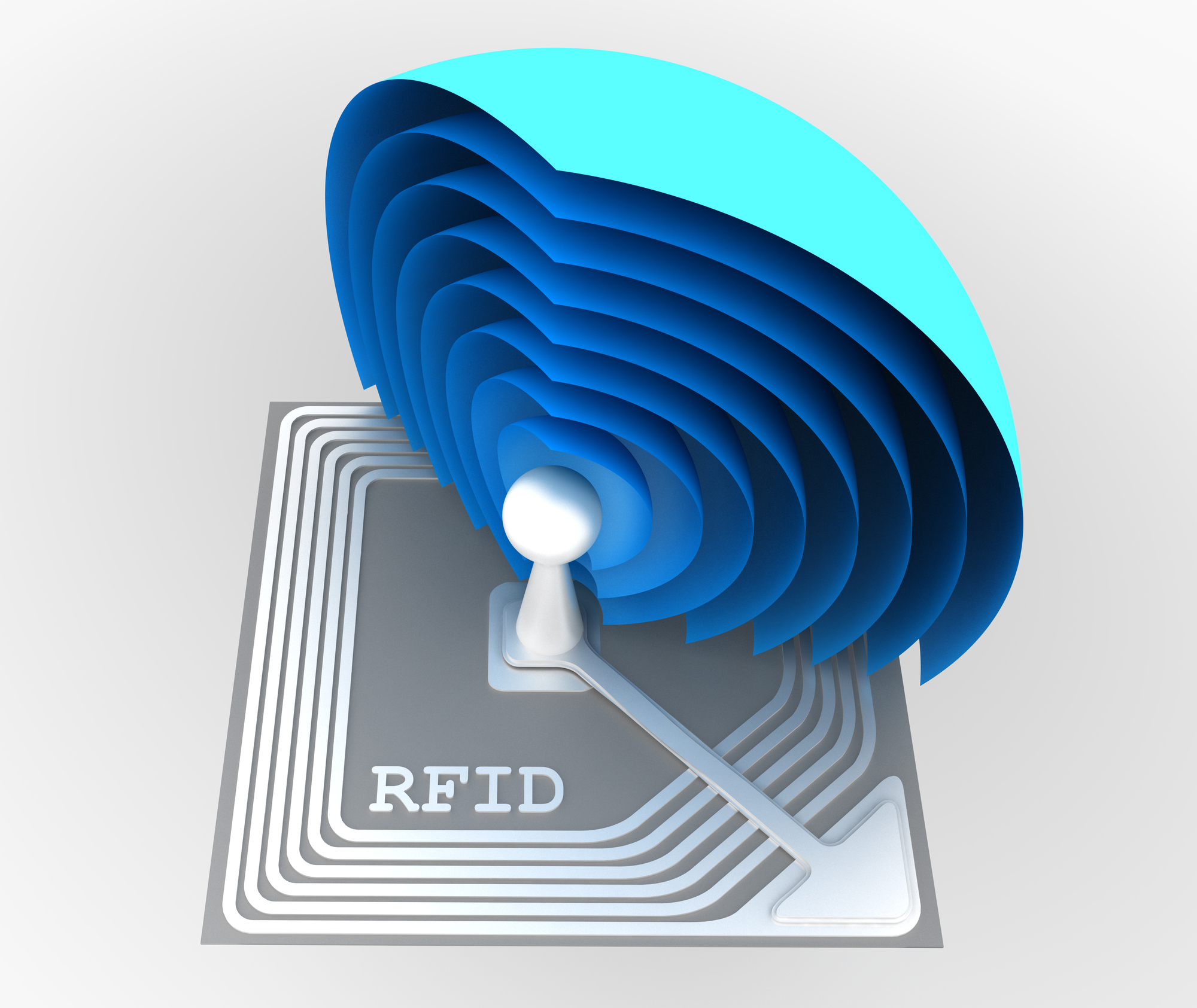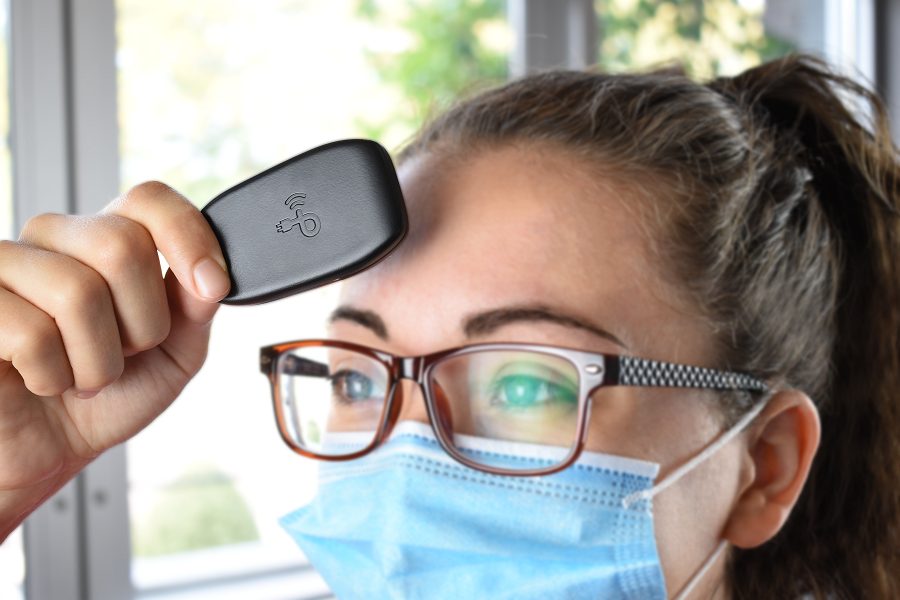
Wireless charging—we’ve all heard of it, and most of us even have it in the palm of our hands every day, embedded in our cellphones. The technology has come a long way in terms of adoption and efficiency over the past several years, but it is far from a new concept.
As far back as the late 1890s, Nikola Tesla designed a high-voltage, short-range wireless power transmission system using a large coil. A version of that technology still lives on today in the ways we charge our electric toothbrushes, phones, and other smart devices. While this inductive coupling technology (more recently known as Qi) boasts a list of benefits, it also has its downfalls: It is limited in the distance over which it can transfer power, and it also typically requires large components for integration. Unleashing wireless power technology to promote the safety of employees, students, and visitors in educational facilities is now within reach, with a different kind of over-the-air charging that overcomes the hurdles of inductive charging.
Our personal devices are getting smaller, the power they consume is decreasing, and another type of wireless power transfer is increasing in popularity to recharge these devices. In scenarios where devices draw a low amount of power or are used relatively infrequently, radio frequency (RF)-based wireless power solutions are being implemented. Each system needs at least one power transmission source, such as a standard RFID reader or an RF wireless power transmitter, which can deliver power to multiple devices in its charging zone. Using a tiny receiver chip and an antenna, radio waves can be harvested from the air and converted into usable power for charging batteries, powering sensors, and more. While RF wireless power systems typically do not deliver the amount of power that an inductive system can, the limitation on charging distance is lifted from just a few centimeters in inductive systems to meters in RF-powered systems.
In the midst of the global pandemic, the necessity for no-touch and low-touch technology for building access control and contact tracing has proven to be more important than ever. So how can we leverage this technology to promote the “new normal”?
How Wireless Power Can Meet the Needs
It is no novel idea that reducing the number of common touchpoints and managing occupancy is essential to limit the spread of COVID-19. With the return of the fall semester, this issue is particularly important for our educational facilities, where students, parents, and faculty alike face the dilemma of having to weigh in-person instruction versus remote learning options.
While valid points are made for each side of this argument, the most at-risk individuals when it comes to in-person instruction are those living in multigenerational homes and those with preexisting conditions that put them at heightened risk for contracting the virus. Introducing wirelessly powered devices into these already high-risk facilities can greatly reduce virus transmission by decreasing the instances of shared touchpoints through the integration of sensors and wirelessly rechargeable batteries, and also by monitoring building occupancy and internal traffic with trustworthy battery-free tracking and scanning devices.
Wireless Power That Goes Beyond Battery Recharging

Example of a temperature scanning key fob.
Power transmitters are a great option to ensure system efficiency, but this technology can be leveraged anywhere there is an RFID system already in place. Many educational facilities already have at least basic RFID infrastructure employed, most often at entryways to allow access. The presence of these RFID scan points eliminates or reduces the need to implement new infrastructure for wirelessly powered devices such as a temperature scanning key fob, which is powered directly using any typical RFID reader. Each employee, staff member, and student can receive their own personal low-cost entry fob, meaning that devices will not be shared or cross-contaminated. The device is embedded with a chip to harvest wireless power, an RFID chip for user identification, an infrared temperature scanner, and an LED light to indicate status. Optional customizable software displays the entrant’s name, temperature, and whether they may enter or not based upon their temperature reading.
Taking it a step beyond just access control and health monitoring, personal COVID-19 safety devices can be fitted with bistable displays to show a user’s temperature or other information, fingerprint scanners for increased security, or even audible and tactile response alarms for facilities that accommodate the visually or hearing impaired.
The key value these systems offer to post-COVID-19 operation is that they can be entirely battery free or can employ small rechargeable batteries—which means that faculty and students are never left in a scenario where they don’t scan into a building or classroom because their device died or cannot take a temperature reading. These devices can be used throughout a single facility or across entire campuses and can also monitor location by logging other RFID readers the user comes within proximity of. At the end of the day, the device is constantly drawing power from the air wherever the user goes, and when users need to take their temperature or “scan in,” the device will always be ready to use.
Untethering the Internet of Things with Wireless Power
Power over distance is not a new concept, but the devices that can benefit from this technology are continually expanding. The explosion of the Internet of Things (IoT) space has tossed a mesh of sensors over our buildings and public spaces, but without a reliable power source, these sensor devices are eventually rendered useless. Batteries provide power for a finite amount of time, but once the battery dies, the sensor serves virtually no purpose and can lead to the failure of larger, more expensive, and more important systems. Running wires to individually installed devices solves the problem of dead batteries, but implementation costs can become unmanageable and outweigh the benefits of the system as a whole.
Facility management systems and building occupant safety are being thrust forward with the explosion of the IoT, and long-range wireless power is the only scalable way to support the rise of these essential systems.
Charles Greene is the chief operating and technical officer at Powercast Corporation, Pittsburgh, PA, and can be reached at [email protected]. Maria Singer is marketing and sales manager at Powercast Corporation and can be reached at [email protected]. This is their first article for Facilities Manager.
Power Tools
Seeks to engage multiple voices from among FM ranks to bring fresh insight and real knowledge from the trenches on what’s working in planning and implementation for energy-related projects and innovations. To contribute, contact [email protected].
See all Power Tools.


